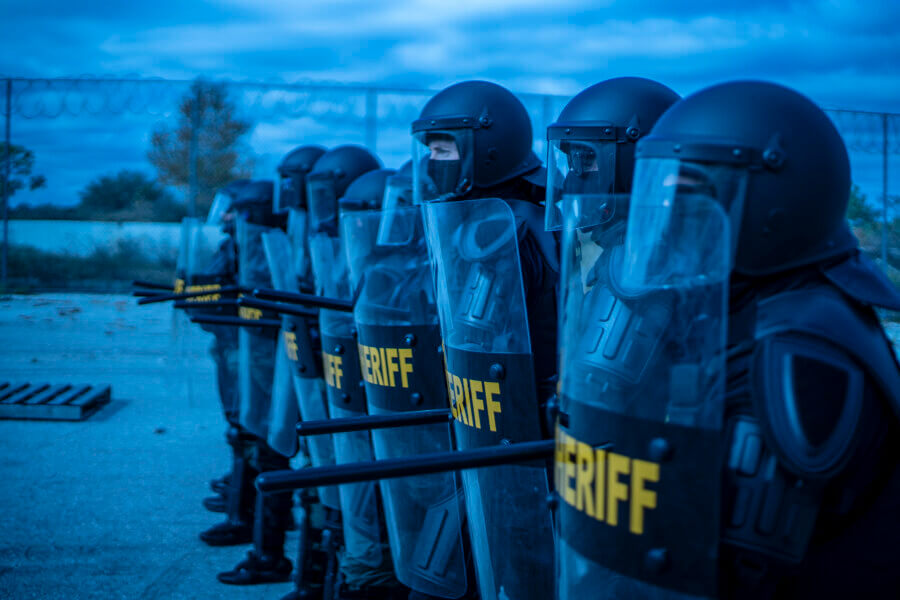
View The Crucial Role of Riot Shields in Law Enforcement
Shields have been both an offensive and defensive tool for thousands of years. Since the mid-20th century, the modern riot shield has become an instrumental piece of a police officer’s protective equipment (PPE). Without a riot shield, officers on the front line are vulnerable to many different types of projectiles and threats. In many cases, keeping your officers safe and ensuring everyone goes home at night’s end can depend on a trusty riot shield.
Here’s a closer look at the crucial role that riot shields play in public law enforcement.
Defending against a Wide Variety of Threats
During the summer of 2020, the Portland, OR, police department went through an unprecedented 100 days of anti-police riots. Many local, state, and federal law enforcement officers who defended the city during that time believed their riot shields were integral to preventing more injured police. As the protests continued through that long summer, some bad actors among the rioters became more and more sophisticated in their efforts to injure, maim, or kill officers.
The Portland Police Bureau said rioters threw river rocks, frozen eggs, frozen water bottles, and glass bottles at officers. Some tried to shoot officers with slingshots using metal ball bearings. Without polycarbonate riot shields, helmets, face shields, and other PPE, even more officers would no doubt have been injured.
The Role of the Riot Shield in Public Disturbances
Various law enforcement and security personnel can benefit from riot shields during disturbances. Shields are used for defensive purposes by security contractors, quick reaction forces, crisis response teams, tactical police units, exceptional event security, and disorder control units. Corrections officers can use riot shields for jail disturbances.
Civil disturbances are dynamic events that can quickly escalate and become more dangerous for the officers and the crowds involved. A line of riot shields allows officers to push back against individuals or a crowd or to control a specific area. The shield in the hands of a trained officer protects against incoming projectiles that can range from bricks to spit.
One exception to the purely defensive riot shield is a capture shield. While a typical riot shield is concave, meaning the shield curves inward around the officer, a capture shield is convex. This type of shield allows a corrections officer or other law enforcement specialist to pin an unruly suspect against a wall so they can be apprehended without injury.
Features of a High-Quality Riot Shield
A modern riot shield from Haven Gear is constructed from molded polycarbonate. This type of plastic has several features that make it ideal for defensive protective gear. For one thing, the material is exceptionally durable. So long as it is stored in the right conditions over time, it can withstand impacts from rocks, bricks, punches, and kicks for a very long time without shattering.
Polycarbonate is also “see-through.” Earlier riot shields were made from materials that limited officers’ fields of vision, preventing them from seeing different incoming threats. The clear plastic of polycarbonate allows your officers to have a clear field of vision in front of them for added safety. A polycarbonate shield is also much lighter than a shield made from other materials. When your officers are standing in a shield line for several hours, carrying less weight helps prevent fatigue.
Finally, polycarbonate riot shields are highly fire-resistant. As we saw in 2020, bad actors in the crowds will sometimes shoot fireworks or throw incendiary devices at officers. Polycarbonate is rated to withstand a sudden burst of heat up to 1,166 degrees Fahrenheit without warping or breaking. That’s a lot of protection for your officers on the front line.If you are considering upgrading your department’s PPE for your officers, contact us at Haven Gear using the contact form on our website.